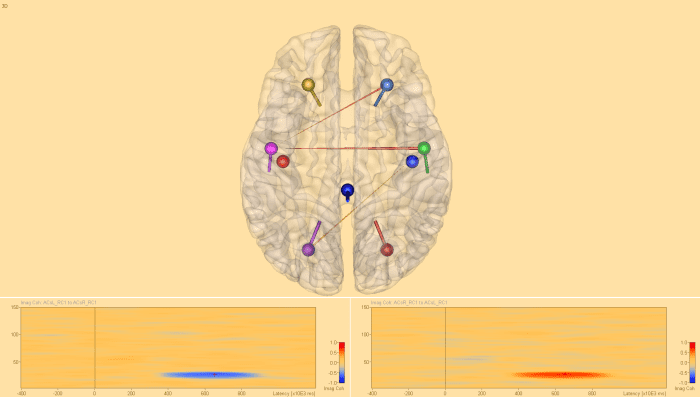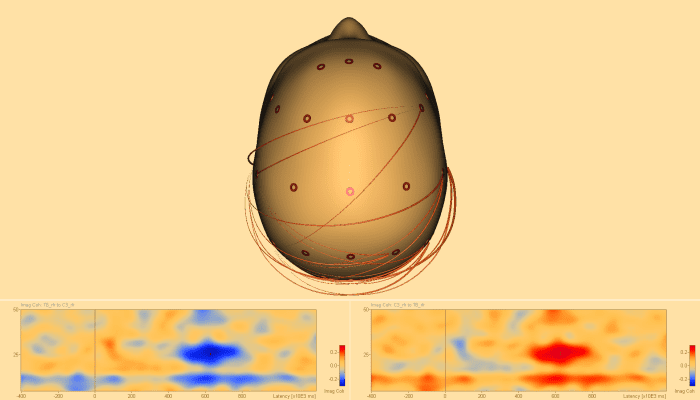
BESA Connectivity
BESA Connectivity 1.0 provides optimized, user-guided workflows for time-frequency and connectivity analysis of EEG/MEG data. Multiple well-established methods are provided. They were optimized for stream-lined performance that yields results for multiple combinations of input data types, time-frequency methods, and connectivity measures.
Particular highlights include:
- Three time-frequency methods and six connectivity methods supported, including Imaginary Part of Coherency, Granger Causality, PDC, DTF
- Direct comparison between conditions, time-frequency methods, connectivity methods with one or two mouse clicks
- Support for source montages as well as sensor-level data and polygraphic channels
- Superior visualization of results in 2D and 3D
- Highly versatile image and video export of results
- ASCII data result export and input support for Matlab
- Modern 64-bit architecture optimized for multi-core processing
- Workflow-based user guidance for optimized usability
The list of features and changes to previous versions of BESA Connectivity 1.0 is provided in the BESA Connectivity 1.0 – Update History.
Please refer to the BESA Connectivity 1.0 booklet for detailed information.
A short guide to the usage of BESA Connectivity is given in the document Steps for using BESA Connectivity.
You can download the complete BESA Connectivity manual here.
BESA Connectivity integrates optimally with data that were analyzed in BESA Research 7.0 or higher, but it can also process data from other software packages as long as they conform to the BESA Connectivity file format.
The program is fully integrated into the BESA Research Complete package, but can also be ordered as a standalone product.


